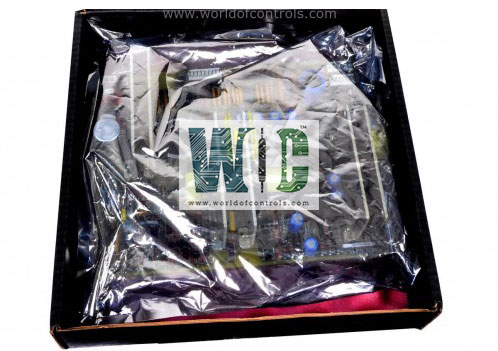SPECIFICATIONS
Part No.: IS220TUBRH2AAA
Manufacturer: General Electric
Country of Manufacture: United States of America (USA)
Size: 10.16 cm wide x 33.02 cm high
Temperature: -30 to 65oC
Technology: Surface-mount
Product Type: Vibration Monitor Board
Availability: In Stock
Series: Mark VI
Functional Description
IS220TUBRH2AAA is a vibration monitor board developed by GE. It is a part of the Mark VI control system. The Keyphasor Inputs on the system accommodate various types of vibration transducers, including Proximitor, Seismic, Velomiter, and Accelerometers (limited to the first three inputs on PVIB). These inputs play a crucial role in monitoring vibration levels and capturing key operational data for analysis and diagnostics.
Supported Transducers
- Proximitor Transducers: Proximitor transducers are indispensable for measuring proximity or displacement, making them an integral component of machinery monitoring systems. By precisely detecting changes in proximity, these transducers play a vital role in monitoring the spatial relationships within machinery components, enabling early detection of potential issues and facilitating preventive maintenance measures.
- Seismic Transducers: Seismic transducers are specifically designed to detect ground motion or structural vibrations. Commonly employed in seismic monitoring applications, these transducers provide valuable insights into the dynamic behavior of structures and terrain. By monitoring seismic activity, these transducers contribute to early warning systems and ensure the safety and integrity of infrastructure in earthquake-prone regions.
- Velomiter Transducers: Velomiter transducers are dedicated to measuring velocity and capturing vital data related to vibration speed. Essential for monitoring rotational machinery and other dynamic systems, velomiter transducers enable precise measurement of vibration velocities, facilitating early detection of machinery faults and ensuring optimal operational performance.
- Accelerometers: Accelerometers represent a cornerstone of vibration monitoring, primarily employed in capturing acceleration data. These transducers play a pivotal role in detecting rapid changes in vibration levels, providing real-time data on machinery performance and condition. By monitoring acceleration, accelerometers enable timely intervention and maintenance actions, safeguarding machinery health and reliability.
Configuration for Seismic Transducer
- A negative bias is added to the input to facilitate open circuit detection, enhancing fault identification capabilities.
- The PRxxL signal is opened to enable true differential readings and meet common-mode rejection requirements, minimizing interference and noise.
- The open circuit reading for the gap voltage (DC component) is set to specific values:
- For Proximitor, Accelerometers, and Velomitor inputs, the DC component should read more positive than -1.0 V DC.
- For Seismic inputs, the DC component should read more negative than -15 V DC.
Position and Phasor Inputs
- Similarly, Position Inputs and Phasor Inputs also have specific requirements for their open circuit reading of the gap voltage (DC component), ensuring proper signal integrity:
- The open circuit reading should be more positive than -1.0 V DC for both Position and Phasor Inputs, aligning with system specifications and ensuring accurate measurement capabilities.
- By adhering to these configuration guidelines and signal characteristics, the Keyphasor Inputs facilitate precise vibration monitoring and analysis, enabling effective condition monitoring and predictive maintenance strategies for industrial machinery and systems.
The WOC team is always available to help you with your Mark VI requirements. For more information, please contact WOC.
Frequently Asked Questions
What is IS220TUBRH2AAA?
It is a vibration monitor board developed by GE under the Mark VI series.
What are Keyphasor Inputs, and what types of transducers do they accommodate?
Keyphasor Inputs are essential components for monitoring vibration levels in machinery and systems. They support various transducers including Proximitor, Seismic, Velomiter, and Accelerometers (limited to the first three inputs on PVIB).
How are vibration signals handled by Keyphasor Inputs?
Vibration signals are superimposed upon a DC bias voltage to ensure they fall within the defined input voltage range, allowing for compatibility with the system's measurement capabilities.
What are the requirements for Position and Phasor Inputs?
Both Position and Phasor Inputs require the open circuit reading of the gap voltage (DC component) to be more positive than -1.0 V DC, ensuring signal integrity and alignment with system specifications.
